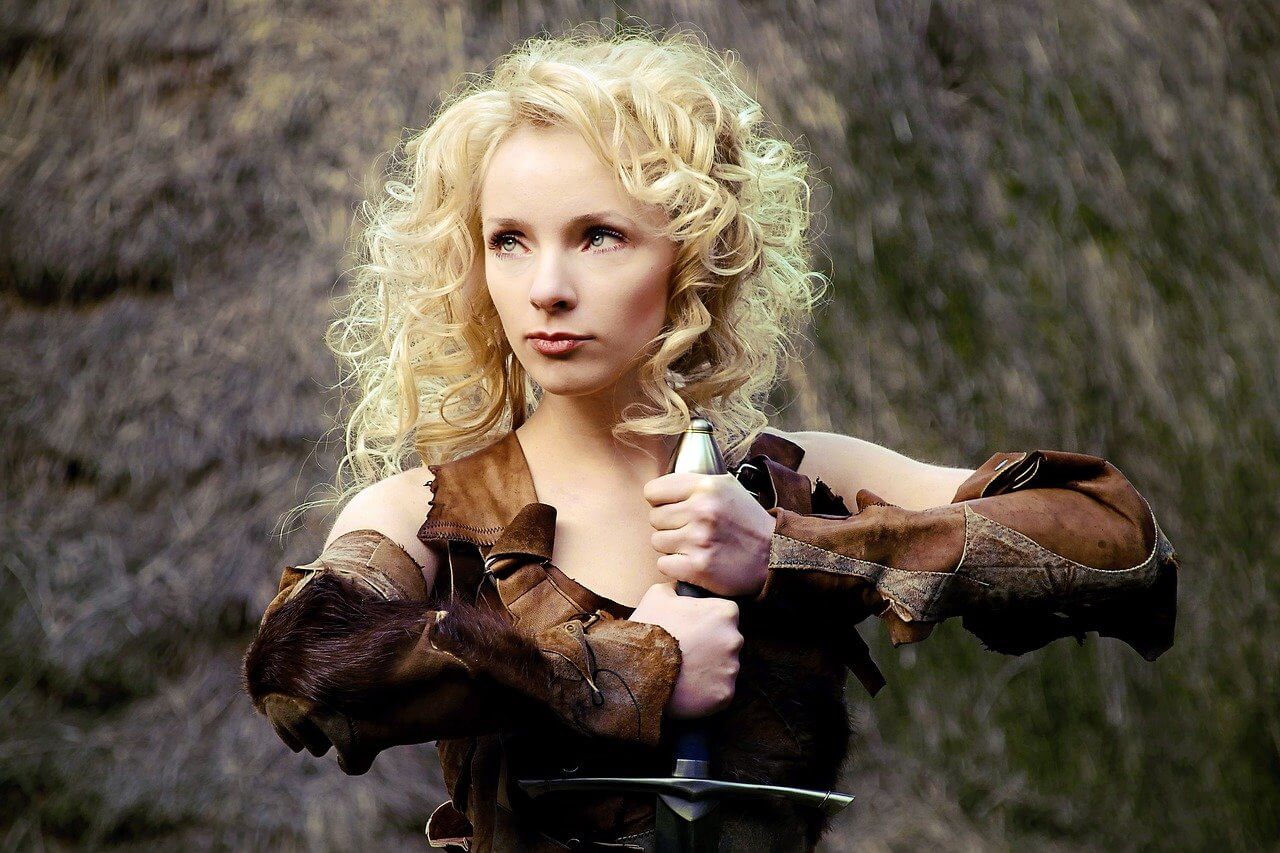

Tights are a type of underwear, which are stockings connected to panties.
Fashion for this item of clothing went in the 40s of the last century, but until the 60s it was not widespread. Everything changed with the advent of mini skirts, when previously used stockings were already problematic to wear - due to the insufficient length of the skirt, the top of the sock product was visible.

@conteofficial
In modern fashion, tights are a multifunctional tool that can act to solve various problems - from modeling the figure, to placing accents in the image.
About what types there are and where they are appropriate, we will tell further, but for now, a few arguments for what tights are needed:
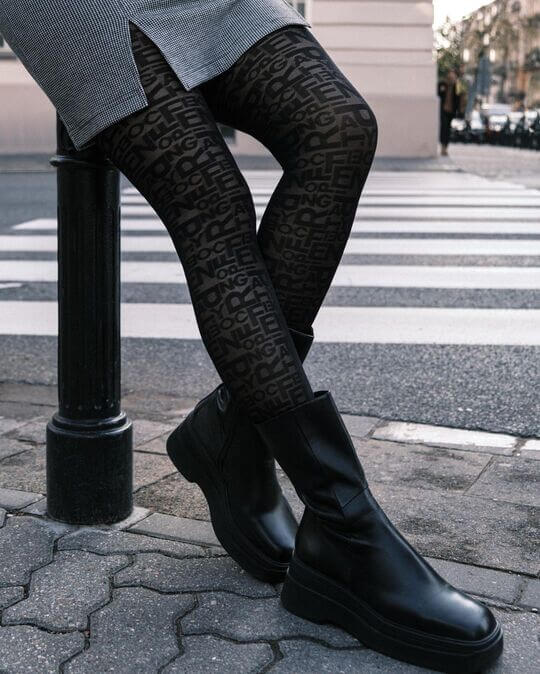
@conteofficial
Types of tights are determined by different comparison criteria. There is, for example, a classification by sex and age. Here are the highlights:
Models are also divided by purpose:
Today we are talking about women's household tights, and then look for comprehensive information on the types and tips for choosing a suitable product.
The first and most important classification in terms of comfort and appearance is, of course, the size of the tights. Traditionally, the size of women is determined by the height and weight of the girl - you probably saw a size chart with this data on the back of the package.
Usually, the size is determined by numbers or letters.
Most often, tights contain both letter and numerical markings, for example, 3M or 2S. Due to the fact that they are made with the addition of elastic fibers and tend to stretch both in length and in width, the same size is suitable for girls with different parameters. So, for example, the size of 2S will equally well sit on a girl with a height of 150 cm and a weight of 60 kilograms, and on a woman with indicators of 170 cm and 55 kg.
The size grid of tights is presented below in the form of a table.
How to choose the size of tights:

Note that this is an average table. For some manufacturers, the ratio of weight to height may shift slightly along the size grid. This is due to the amount of elastic fibers present in the composition, as well as the material of production - this changes the degree of stretching of tights, which ultimately affects their use for different types of figures.
To buy tights exactly in size, be sure to study the size grid of a particular manufacturer - it is placed on the back of the package or in the product card of the online store.
For the production of tights are used:
Spandex is a type of synthetic fabric that is obtained from polyurethane fibers - their amount in the material can reach 85%. The remaining interest is taken by nylon or acetate.
Spandex has increased elasticity and extensibility by 3-4 times. Pantyhose made of spandex are not prone to wear, and also do not crumple. The surface of the material is shiny, and the product itself is light, but durable.

One of the main advantages of spandex is its ability to return to its original state. For this reason, the tights do not stretch, that is, they hold the original furma for a long time.
Among other advantages of spandex:
Lycra 3D is one of the latest achievements of the American company DuPont. The material was presented in 1994 and since then something fundamentally better has not been invented.
Lycra 3D from the usual Lycra differs in the type of weaving:
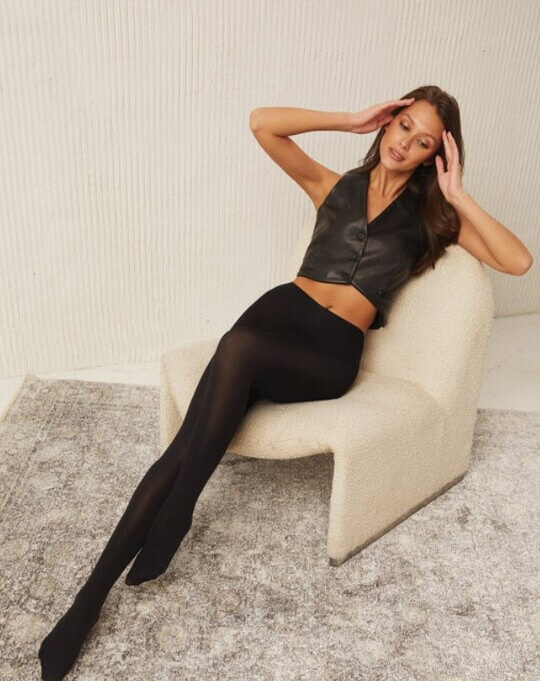
The new method of weaving has made tights even more elastic and viscous, as well as durable - puffs and hooks on such products remain less frequent.
Lycra makes tights shiny, but in modern fashion, shiny tights are better not to use - this is a sign of bad taste. The exception will be tights that you wear under jeans - there their shine is still not seen. For self-wear, choose models with a matte surface.
If you are interested in what kapron tights are made of, then know that capron is one of the representatives of polyamide. Most kapron models on the market are made using polyamide, as it is elastic, dries quickly and is inexpensive.
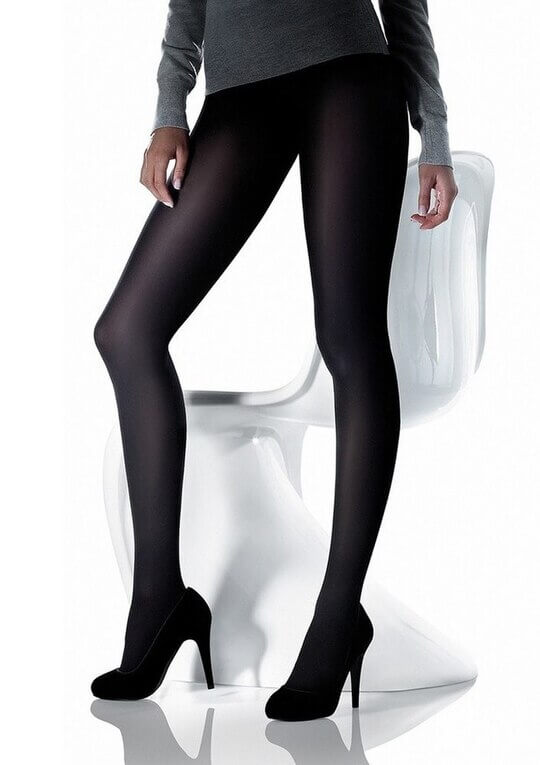
But there is a downside to such products - they are prone to stretching and tightening, and yet - do not tolerate streaks, as they lose their shape. To make things more durable and resistant, elastane is added to the polyamide.
Microfiber is another synthetic fabric made from polyester fibers. Due to the special production technology, the material has thick bristles. Tights made of microfiber retain heat well, pleasant to the touch. Their surface is matte or slightly shiny.
Microfibers are used for warm tights - winter or demi-season.
Taktel is a material based on polyamide fiber. Ultra-thin, soft and smooth. It retains heat well, so it is used for warm products.
Natural cotton and linen are the perfect solution for any time of the year. In summer, they will not be hot, and in winter they will help retain heat and prevent freezing. Of course, to ensure elasticity, elastic fibers are added to cotton or linen - polyamide and elastane. The percentage of cotton in such products ranges from 50 to 80%.

Of the disadvantages - a tendency to deformation, especially after washing, as well as the ability to retain odors.
Knitted tights sometimes refer to natural fabrics, but the knitted fabric itself can be both natural and synthetic - different fibers in different combinations are used for production. Therefore, we will highlight it separately.
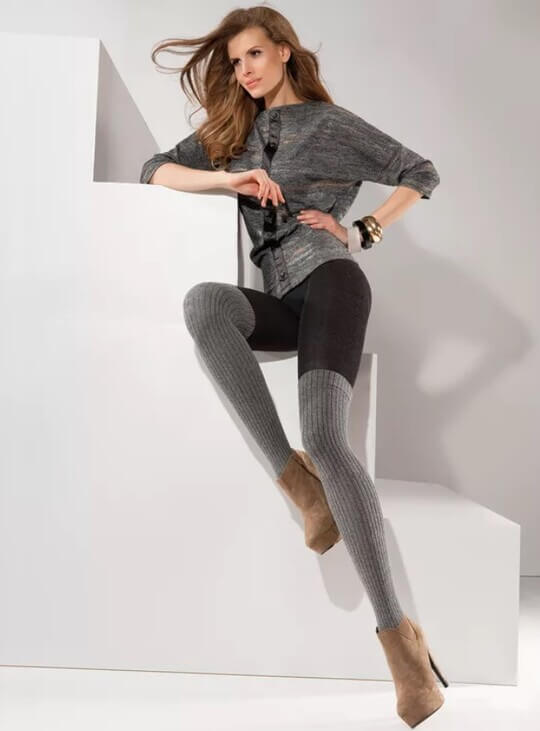
The properties of the final product depend on which fibers were used in the composition. If there are few elastic fibers in tights, knitted models will quickly lose their shape.
Wool tights are a salvation for a cold winter, especially if the percentage of natural wool in the product is high. As in the case of cotton, elastic fibers are added to the wool so that things keep their shape and do not deform when washed.
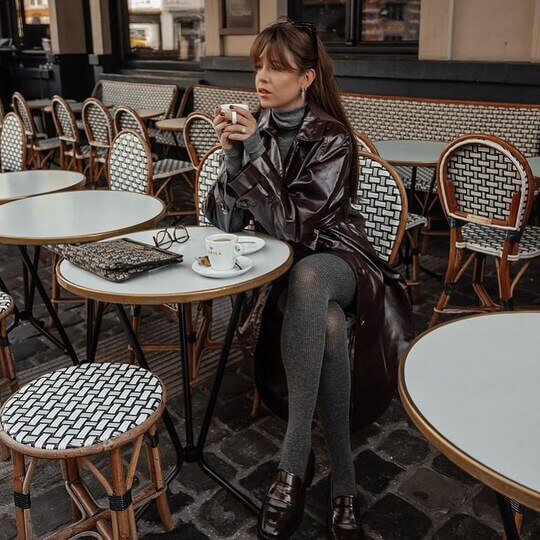
@calzedonia
Most often, tights are made of sheep or camel wool.
Silk tights are a real rarity on store shelves. They are expensive, since expensive silk fiber is used for production, extracted by hand. Silk products have a noble shine, very smooth and pleasant to the touch.
They are produced by single brands - one of the most popular is the French company Cervin.
In addition to thin silk models, there are also winter ones - there silk fibers are combined with wool or synthetic threads.
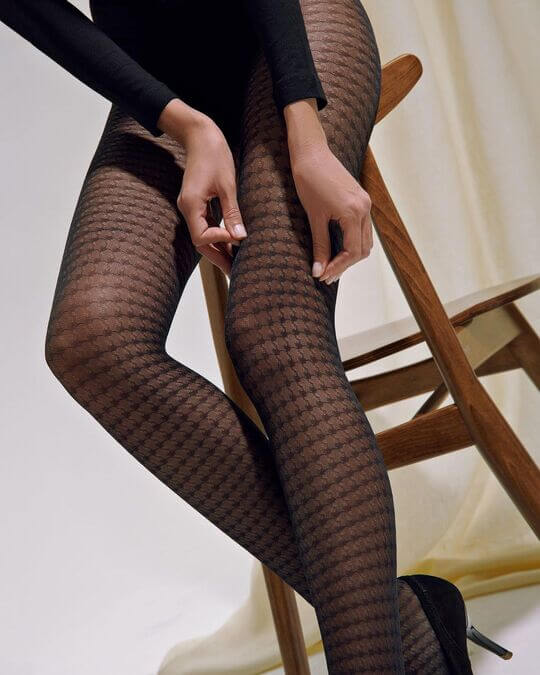 @conteofficial Types of women's tights by density:
@conteofficial Types of women's tights by density:
Ultra-thin tights can be 5, 8, 10 dens. These are barely noticeable tights that are worn for:
Due to the thinness - this is not the most durable model, but it is also relatively cheaper than denser options.
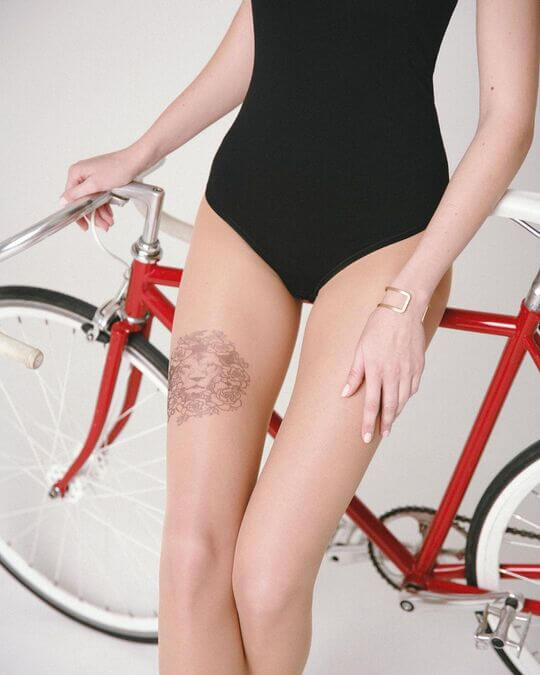
@conteofficial
Thin tights have indicators of 10, 12 or 15 dens. On the legs, they are slightly more noticeable than ultra-thin, but they pursue all the same tasks - to even out the skin tone and make the image complete, more formal and accurate.
Thin kapron tights are perfect for evening dresses - they will not attract attention and will correctly complement the outfit.
Tights with a density of 20, 25, 30 and 40 dens are the most common option. On the legs, they are already more noticeable, so they perfectly correct problem legs - with bruises or abrasions. It is medium-thick tights that are used for business style and are often prescribed as an obligatory part of the dress code of companies.

@gattaofficial
All tights that have an indicator of more than 40 dens are dense models. In the thickest models, there can be 100 and even 200 dens - the denser, the warmer. Tight tights completely overlap the color of the legs. For the office, they are rarely used - usually this is part of casual outfits.

@conteofficial
Different parts of tights can have different densities. So, for example, the "shorts" and the sock are often made denser, since these are wear-prone places.
The design of all tights is the same, but their upper part is different - shorts. Depending on the model, shorts may partially cover the thighs or not at all. On the shorts, a sealed material is used, which provides wear resistance and a modeling effect.
Types of shorts on tights:

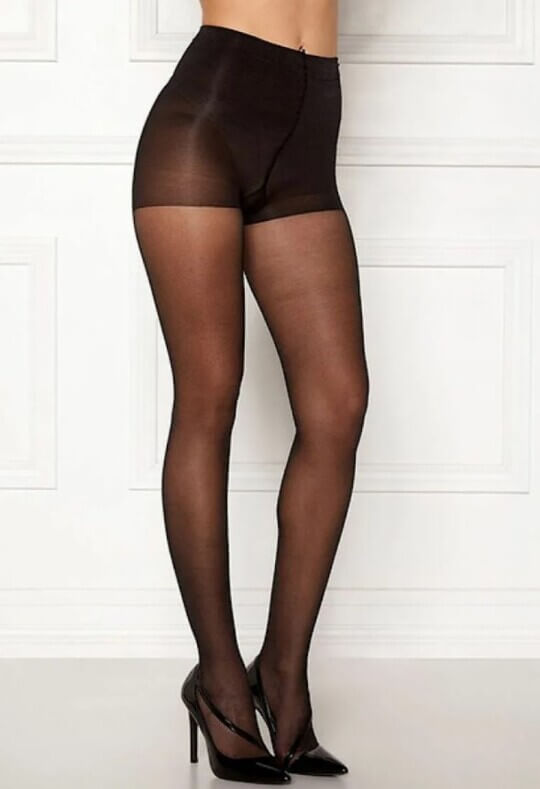
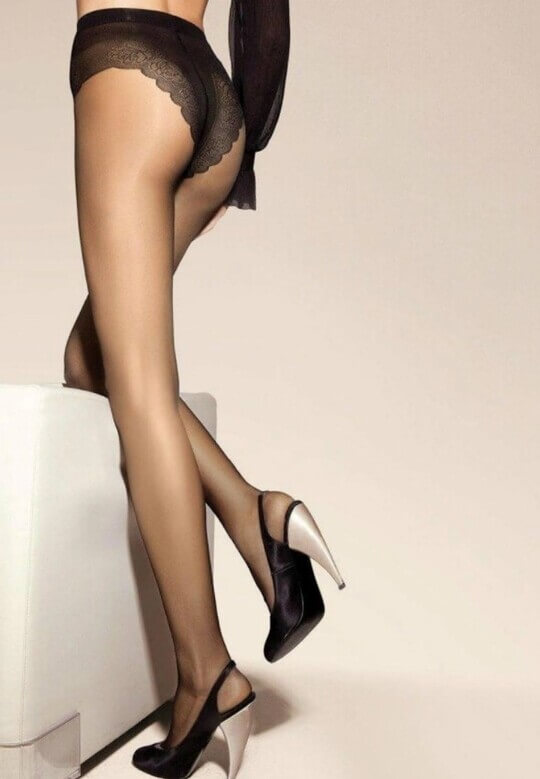
What are women's tights in color depends only on the imagination and courage of the manufacturer. Speaking in general terms, they can be:

@goldenladyofficial
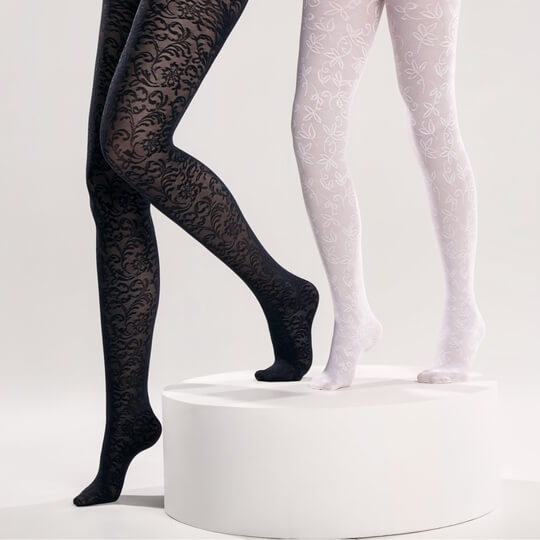
@conteofficial

@gabriella_company
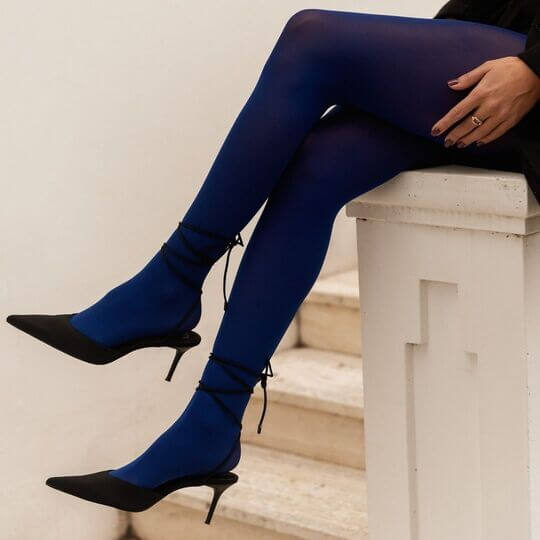
@goldenladyofficial

When choosing a color, it is customary to focus on shoes - for a black pair, dark tights, for light, respectively, light. Nevertheless, this rule is often compromised, especially when colored models of tights are used.
When choosing a color, keep in mind that too contrasting combinations of shoes and tights visually "cut" the legs, so you will seem more squat.
In addition to the main classification by size, material and color, types of women's tights include additional categories.
Modeling, correcting or tightening tights are products designed to make visually slimmer, as well as hide imperfections of the figure. The effect is achieved by compacting the upper part, where more lycra or elastane is added.
A type of kapron tights imitating classic stockings. The effect is achieved by applying a pattern to the material. The main characteristic of such products is that in the middle of the thigh they have an imitation of a hosiery elastic band - openwork, curly or a sharp transition from the main color.
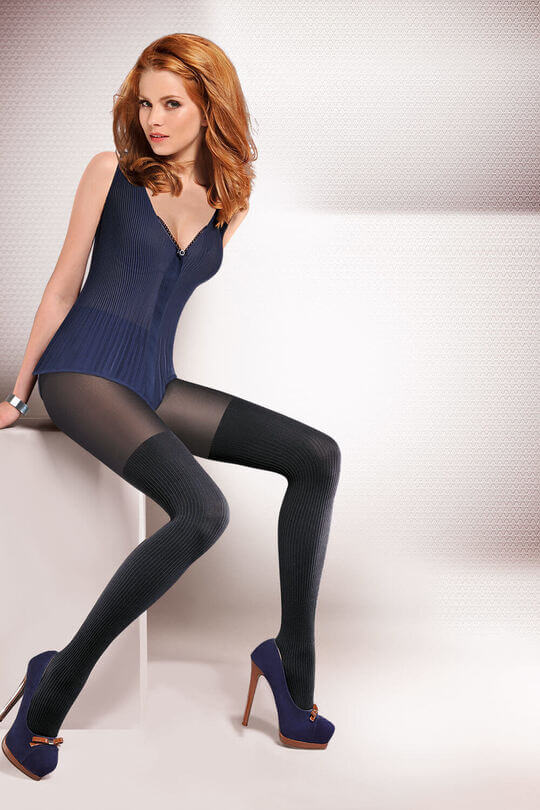
Models in the net are tights with squares of different sizes over the entire surface of the product - even the belt and shorts they usually have mesh. The mesh itself is empty, that is, in fact, tights are elastic threads intertwined in a network.

@conteofficial
Tights with a special weave of threads, which improve blood flow and, according to manufacturers, even have an anti-cellulite effect, but this, of course, is more of a marketing ploy.
In fact, these are the same ordinary tights, most often made of synthetic fabric, less often with the addition of wool. The essence of thermal tights is to create an air layer of warm air due to a special two-level weaving and at the same time contribute to the removal of moisture.
And now - 5 golden rules that you need to memorize and use when choosing tights:

@gabriella_company
How many types of tights in your wardrobe?

